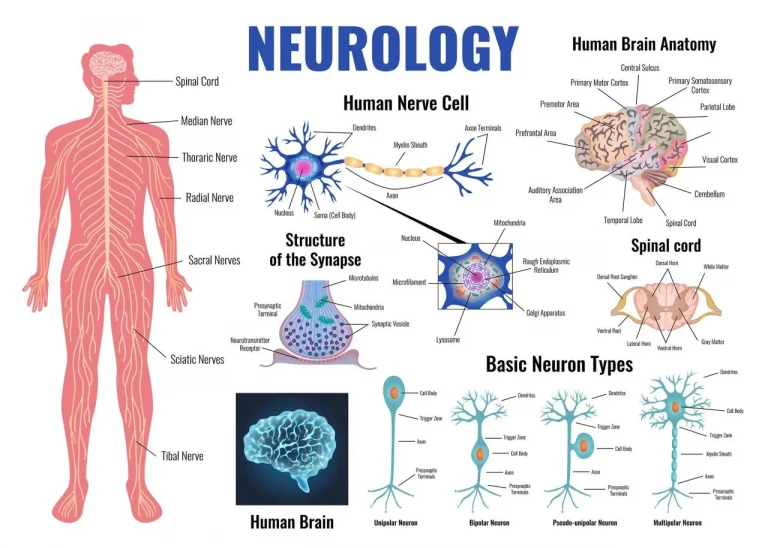The Systematic Study Of The World: An In-Depth Look At The Scientific Process
Science plays an integral role in our modern lives, from the technology we use daily to our understanding of the universe. But what exactly makes science distinct as a mode of inquiry? At its core, science can be defined as the systematic study of the natural and physical world through observable evidence.
If you’re short on time, here’s the quick answer: Science is the systematic study of the structure and behavior of the physical and natural world through observation and experimentation. It uses an organized method of forming and testing hypotheses to gain knowledge.
In this approximately 3000 word article, we’ll take a comprehensive look at how science is defined by its systematic process of studying the empirical world. We’ll examine the scientific method and its key principles more closely.
We’ll also overview the various branches of science and how they systematically build knowledge in their respective disciplines.
The Foundations of Science
Science is built upon a strong foundation of principles and methodologies that guide researchers in their quest for knowledge and understanding. These foundational principles ensure that scientific studies are conducted in a systematic and reliable manner, allowing for the development of accurate and credible explanations of the natural world.
Seeking Falsifiable, Naturalistic Explanations
One of the key principles of science is the search for falsifiable, naturalistic explanations. This means that scientific hypotheses and theories must be testable and capable of being proven false through empirical evidence.
By focusing on naturalistic explanations, scientists aim to understand phenomena without relying on supernatural or unverifiable claims.
For example, when studying the causes of a disease, scientists will investigate natural factors such as genetic predisposition, environmental exposures, and lifestyle choices. By ruling out supernatural or non-naturalistic explanations, scientists can ensure that their findings are grounded in observable and measurable evidence.
Empiricism: Knowledge Through Observation
An essential aspect of the scientific process is empiricism, which emphasizes the acquisition of knowledge through direct observation and experimentation. Scientists rely on gathering empirical evidence to support or refute their hypotheses and theories.
This evidence can take the form of data collected from experiments, surveys, observations, or other reliable sources.
By gathering and analyzing empirical data, scientists can draw conclusions and make informed decisions about the phenomena they are studying. This reliance on observation and experimentation helps to ensure that scientific findings are based on objective evidence rather than subjective opinions or beliefs.
Objectivity, Skepticism, and Openness to Revision
Science places a strong emphasis on objectivity, skepticism, and openness to revision. Objectivity means that scientific studies should be conducted in an unbiased and impartial manner, with researchers striving to minimize personal biases and preconceived notions.
This commitment to objectivity allows for the evaluation of evidence based on its merit rather than personal beliefs or preferences.
Skepticism is another important aspect of science. Scientists are encouraged to question and critically evaluate the evidence and arguments presented, seeking alternative explanations and potential flaws in the research.
By fostering a culture of skepticism, science ensures that ideas are thoroughly tested and scrutinized before being accepted as valid.
Furthermore, science is always open to revision and refinement. As new evidence emerges or new technologies become available, scientific theories and hypotheses can be revised or even replaced. This adaptability and willingness to revise existing knowledge is what allows science to progress and evolve over time.
For more information about the foundations of science, you can visit the website of the National Academy of Sciences at www.nas.edu.
The Scientific Method
The scientific method is a systematic approach used by scientists to investigate and understand the natural world. It involves a series of steps that help researchers gather evidence, form hypotheses, conduct experiments, and draw conclusions.
By following this method, scientists can ensure that their findings are reliable, reproducible, and based on evidence.
Making Observations and Asking Questions
The first step in the scientific method is to make observations and ask questions about a particular phenomenon or problem. Scientists carefully observe the world around them, noting patterns, anomalies, and interesting phenomena.
These observations form the basis for further investigation and help scientists identify areas that require deeper understanding.
Forming Testable Hypotheses
Once scientists have made observations and asked questions, they can begin to form hypotheses. A hypothesis is a proposed explanation or prediction based on existing knowledge and observations. It is important for a hypothesis to be testable, meaning that it can be proven true or false through experimentation.
Designing Controlled Experiments
After forming hypotheses, scientists design controlled experiments to test their predictions. In a controlled experiment, scientists manipulate one variable, called the independent variable, and measure the effect on another variable, called the dependent variable.
By controlling all other variables, scientists can isolate the relationship between the independent and dependent variables.
For example, imagine a scientist wants to investigate the effect of caffeine on reaction time. They could design an experiment where participants consume either a caffeinated or decaffeinated beverage, and then measure their reaction time in a standardized test.
By comparing the performance of the two groups, the scientist can determine if caffeine has an impact on reaction time.
Analyzing Results and Drawing Conclusions
Once the experiment is conducted, scientists analyze the results to determine if their hypothesis is supported or refuted. This analysis involves statistical tests to determine if the observed differences between groups are statistically significant.
If the results support the hypothesis, scientists can draw conclusions and communicate their findings to the scientific community and the public.
It is important to note that the scientific method is an iterative process. Scientists often repeat experiments, modify hypotheses, and refine their methods based on new evidence or insights. This constant refinement and improvement help to build a body of knowledge that is reliable and continually updated.
For more information on the scientific method, you can visit Scientific American or Khan Academy.
Branches of Science
Physical Sciences (Physics, Chemistry, etc.)
The physical sciences encompass a wide range of scientific disciplines that study the fundamental laws and principles governing the natural world. Physics, for instance, focuses on the study of matter, energy, and the interactions between them.
It delves into the intricacies of motion, forces, electricity, magnetism, and much more. Chemistry, on the other hand, explores the composition, structure, properties, and reactions of substances. It plays a crucial role in understanding the building blocks of matter and the chemical processes that occur in our everyday lives.
Earth and Space Sciences (Geology, Astronomy, etc.)
The earth and space sciences revolve around the study of our planet, the universe, and everything in between. Geology examines the Earth’s materials, structures, and dynamic processes such as earthquakes, volcanoes, and plate tectonics.
It helps us understand the formation of rocks, minerals, and the evolution of the Earth’s surface. Astronomy, on the other hand, explores celestial objects, including stars, planets, galaxies, and the vastness of the universe.
It unravels the mysteries of black holes, dark matter, and the origins of our universe.
Life Sciences (Biology, Ecology, etc.)
The life sciences encompass the study of living organisms and the intricate workings of life itself. Biology, as a core discipline, investigates the structure, function, growth, evolution, and distribution of living organisms.
It encompasses a wide range of subfields such as botany, zoology, microbiology, genetics, and more. Ecology, on the other hand, explores the interactions between organisms and their environment. It examines the complex relationships between living organisms, their habitats, and the impact of human activities on ecosystems.
Social Sciences (Psychology, Sociology, etc.)
The social sciences focus on understanding human behavior, society, and the various aspects that shape our interactions and experiences. Psychology, for example, studies the mind and behavior, exploring topics such as cognition, emotions, personality, and mental disorders.
Sociology, on the other hand, examines social structures, institutions, and the patterns of human behavior within different groups and societies. It explores topics such as social inequality, culture, social change, and the dynamics of social relationships.
Building Scientific Knowledge
The systematic study of the world involves a rigorous scientific process that allows researchers to build knowledge and make advancements in various fields. This process is based on several key principles that ensure the credibility and reliability of scientific findings.
Replicability and Peer Review
One crucial aspect of the scientific process is the concept of replicability. This means that any scientific study should be conducted in a way that allows other researchers to reproduce the experiment and obtain similar results.
Replicability is essential as it allows for the validation of findings and ensures that they are not just coincidental or the result of bias. Peer review is another crucial step in the scientific process.
Before a study is published, it undergoes a thorough evaluation by experts in the field who assess its methodology, analysis, and conclusions. This process helps to identify any flaws or biases and ensures that only high-quality research is disseminated.
Scientific Communication and Publications
Scientific communication plays a vital role in the dissemination of knowledge. Researchers publish their findings in scientific journals, which serve as platforms for sharing information with the scientific community and the wider public.
These publications provide detailed accounts of the research process, including methodology, results, and analysis. They also allow for the replication of experiments and further exploration of the topic.
Additionally, scientific conferences and symposiums provide opportunities for researchers to present their work and engage in discussions with fellow scientists.
Collaboration in the Scientific Community
Collaboration is a fundamental aspect of scientific research. Scientists often work together, combining their expertise and resources to tackle complex problems and produce more robust findings. Collaboration can take various forms, including interdisciplinary collaborations where researchers from different fields come together to address a common research question.
These collaborations foster innovation and allow for the exchange of ideas and knowledge across disciplines.
Funding, Institutions, and Infrastructure
Funding, institutions, and infrastructure play a crucial role in supporting scientific research. Research projects require financial resources, and funding from government agencies, private organizations, and foundations enables scientists to conduct their studies.
Institutions, such as universities and research centers, provide the necessary infrastructure, including laboratories, equipment, and access to specialized databases and libraries. These resources are essential for researchers to carry out their experiments and analyze their data effectively.
Furthermore, institutions also provide a supportive environment for collaboration and the exchange of ideas among scientists.
Science and Society
Science Policy and Government
Science plays a crucial role in shaping policies and decision-making processes at the government level. Government bodies rely on scientific research and evidence to develop effective policies that address societal challenges.
Science policy involves the integration of scientific knowledge into the political and decision-making processes to ensure that policies are based on sound evidence and reliable data. This helps in formulating policies that promote public health, environmental sustainability, and technological advancements.
Government funding for scientific research is also vital as it enables scientists to carry out their work and make important discoveries that benefit society as a whole.
One of the well-known examples of science policy is the Intergovernmental Panel on Climate Change (IPCC), which brings together scientists from around the world to assess the latest research on climate change.
Their reports and recommendations inform governments and international organizations on the actions needed to mitigate and adapt to climate change. This collaboration between science and government highlights the importance of science in policymaking and the need for evidence-based decision-making.
Science Education and Literacy
Science education and literacy are essential for a society to understand and appreciate the scientific process. By promoting science education, individuals gain the necessary knowledge and skills to critically analyze scientific information and make informed decisions.
Science education begins at an early age, with schools providing a foundation in scientific concepts and principles. Through hands-on experiments and interactive learning, students develop a curiosity for science and an understanding of its importance in everyday life.
Furthermore, science literacy goes beyond formal education and extends to the general public. It involves the ability to understand scientific concepts, evaluate scientific claims, and engage in informed discussions about science-related topics.
Science literacy enables individuals to make informed decisions about their health, the environment, and technological advancements. It also fosters a culture of innovation and encourages the pursuit of scientific careers.
Public Perceptions and Misconceptions of Science
Public perceptions of science can greatly influence the acceptance and support for scientific research and its applications. However, there are often misconceptions and misunderstandings about certain scientific topics.
These misconceptions can arise from misinformation, lack of scientific literacy, or biases. It is crucial to address these misconceptions and communicate scientific information effectively to the public.
Scientists and science communicators play a vital role in bridging the gap between scientific research and public understanding. They can use various mediums such as articles, videos, and social media to communicate complex scientific concepts in an accessible and engaging manner.
By engaging with the public and addressing their concerns, scientists can build trust and promote accurate understandings of scientific topics.
Organizations like the National Academies of Sciences, Engineering, and Medicine provide resources and guidance for effective science communication. Their reports and publications aim to bridge the gap between scientists and the public, ensuring that scientific information is accessible and understood by all.
Conclusion
In summary, science is defined by its systematic process of studying the empirical world through controlled observation, experimentation, analysis, and hypothesis testing. While scientific knowledge grows and changes over time, this rigorous methodology for understanding reality remains constant.
The systematic pursuit of falsifiable, naturalistic explanations continues to push the boundaries of human knowledge across scientific disciplines.







